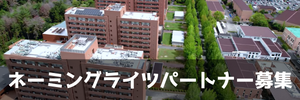(English announcement can be found in the latter half of this notice.)
広島大学バイオマスプロジェクト研究センターと中国地域バイオマス利用研究会の共催で広島大学バイオマスイブニングセミナーを開催しています。バイオマスに関する基本的な考え方から最先端の情報までをカバーして、この地域におけるバイオマスの活動に資することを目的とするものです。第49回を以下の日程で開催しますので、ご参集下さい。
日時 2017年1月16日(月)16:20~17:50
会場 広島大学東広島キャンパス工学部108講義室
http://hiroshima-u.jp/eng/access/lectureroom
http://hiroshima-u.jp/eng/access/building
http://hiroshima-u.jp/access/
プログラム
解説 広島大学大学院工学研究院 教授 松村 幸彦
講演 広島大学大学院工学研究科 M2 廣田 綜一
「藻類のトレファクション」
不活性ガス中でバイオマスを加熱し、エネルギー密度向上を目的としたトレファクションを、マコンブ、スピルリナ、クロレラを試料とし140 – 320 oCの温度域にて実施しました。各試料において、固体収率は温度上昇に伴い減少した一方、液体と気体収率は増加しました。主生成ガスは二酸化炭素であり、少量ではありますが一酸化炭素も確認されました。スピルリナとクロレラは高温において比較的高い固体収率、炭素含有率、高位発熱量を示しました。
講演 広島大学大学院工学研究科 M1 五藤 聡
「ユーカリの水熱前処理における粒径の影響」
本研究の目的はリグノセルロース系バイオマスの水熱前処理における粒径の影響を考察することです。酵素糖化の効率を上げるために水熱前処理が重要でありますが、いまだ粒径の影響を調査した報告はありません。本実験は90‐125, 125-180, 180-500 µmの粒径を調整し、昇温速度 4K/minで200℃まで昇温しました。200℃で30分の保持時間を設けました。固体試料はCHNで、液体試料はTOC, HPLC で分析されました。粒径が大きい場合に酢酸の生成量が抑制される結果となりました。
講演 広島大学大学院工学研究科 D3 Nattacha PAKSUNG
「超臨界水におけるリグノセルロース系のバイオマスのモデル化合物の相互作用 」
バイオマスを効率よくエネルギーに変換する技術の一つに超臨界水ガス化があります。この技術は高温高圧条件下での熱水反応を用いたエネルギー回収法であり、水中で処理を行うので、原料のバイオマスが水を含有していても問題はなく、高い反応性を持っています。さらに、乾燥プロセスが必要でなく、水素収率が高いため、有望な技術であります。本研究ではリグノセルロース系のバイオマスのモデル物質としてグルコース、キシロースおよびグアヤコールを用い、混合物の超臨界水ガス化に及ぼす相互作用を注目しました。実験条件は反応温度450°C、圧力25 MPa、滞留時間5-60 sとしました。炭素収支をとるため、ガス、液体、固体中の炭素量を測定し、反応速度定数をそれぞれ求めました。
講演 広島大学大学院工学研究科 M2 山口 直希
「各種溶媒を用いたセルロース充填層の溶解」
セルロースからバイオエタノールを生産する際、酵素加水分解を用いてセルロースからグルコースを回収し、酵母によりエタノールに発酵します。その際、高温高圧水でセルロースを溶解する水熱前処理を用いることで酵素加水分解が迅速になることが報告されています。しかしながら、得られるセルロース溶液の濃度が低いという問題があります。そこで、各種溶媒を用いセルロースの水熱処理を行い、溶媒ごとのセルロースの溶解性の比較を行いました。
司会 広島大学大学院工学研究院 特任助教 Obie FAROBIE
なお、18:00より意見交換会(参加費 800円)を開催します。ご都合の付く方はこちらにもご参加下さい。
The 49th Hiroshima University Biomass Evening Seminar(The 5th Hiroshima University ACE Seminar)
Biomass Project Research Center, Hiroshima University, and HOSTY Association are co-organizing the Hiroshima University Biomass Evening Seminar. This seminar covers topics from the fundamentals of biomass to the latest information so that it can contribute the activities on biomass in this district. The 49th seminar will be held as follows. Please join.
Date & Time: Mon.16 Jan, 2017 16:20-17:50
Place: Engineering 108 Lecture Room, Higashi-Hiroshima Campus, Hiroshima University
http://hiroshima-u.jp/eng/access/lectureroom
http://hiroshima-u.jp/eng/access/building
http://hiroshima-u.jp/access/
<Program>
Commentary: Yukihiko MATSUMURA
Professor, Institute of Engineering, Hiroshima University
Lecture: Soichi HIROTA
M2 Student, Graduate School of Engineering, Hiroshima University
“Torrefaction of Algae ”
The torrefaction treating biomass at low temperature under inert atmosphere to improve low calorific value and higher cost of transportation was carried out using Laminaria japonica, Spirulina and Chlorella and 5 different temperatures from 140 oC to 320 oC. Focusing on each yield after treatment, the solid yield decreased with the increase of temperature, while, liquid and gas yield increased. The main component of produced gas was carbon dioxide and some carbon monoxide was also detacted. Also, Spirulina and Chlorella showed higher solid recovery rate, carbon content and HHV value than L. Japonica at high temperature.
Lecture: Satoshi GOTO
M1 Student, Graduate School of Engineering, Hiroshima University
“Effect of Particle size on hydrothermal pretreatment of eucalyptus”
The purpose of this study is to find out the effect of particle size and temperature during hydrothermal pretreatment of eucalyptus. We conducted research varied from 90-125 um to 180-500 um as particle size. 200 degrees Celsius and 4 K/min were used as target temperature and hating rate. Agitation rate is 50 rpm and the concentration of eucalyptus is 10wt%. In each particle size, we changed holding time from 0 to 30 min. With regard to analysis, CHN, NREL, FT-IR and XRD was used for solid sample and TOC, HPLC and NREL was for liquid sample. particle size was effective to the generation of acetic acid.
Lecture: Nattacha PAKSUNG
D3 Student, Graduate School of Engineering, Hiroshima University
“Interaction between model compounds in lignocellulosic biomass under supercritical water conditions ”
Supercritical water gasification (SCWG) is a conversion technique to transform biomass into energy without necessity of drying process because water in supercritical state (temperature and pressure above 374 °C and 22.1 MPa, respectively) behaves as an organic solvent so that a high conversion can be achieved. Plant biomass or lignocellulosic biomass is a good candidate for a feedstock utilized in this process due to its large availability on Earth. It consists of cellulose, hemicellulose, which are easy to be gasified and lignin, which inhibits gasification. Previously, reaction pathways of cellulose, hemicellulose and lignin were individually proposed by many researchers. However, the study of the reaction mechanisms of the overall biomass is still rare. Therefore, this research is to study the interaction between these compounds in supercritical water aiming for better understanding in a behavior of lignocellulosic biomass in the gasification. To simplify the reaction mechanisms, model compounds for each component are employed instead of the complex structure of those. The interaction between glucose that is a model compound of cellulose, xylose that is a model compound of hemicellulose and guaiacol that is a model compound of lignin is investigated using tubular reactor. Reaction temperatures is 450 °C. A pressure of the system is 25 MPa for all conditions. The effect of each compound in the feedstock, and residence time on product yields as well as interaction networks of glucose, xylose and guaiacol will be presented.
Lecture: Naoki YAMAGUCHI
M2 Student, Graduate School of Engineering, Hiroshima University
“Dissolution of cellulose packed bed in various solutions ”
Cellulose is a good resource which leads to bioethanol as renewable energy. It is considered that high crystalline of cellulose makes bioethanol production difficult, but dissolving cellulose in hot compressed water called hydrothermal pretreatment shorten the whole time of this process. However, the concentration of dissolved cellulose in hot compressed water is low. To make this process more attractive finding and using solvents which can dissolve cellulose in high concentration is necessary, but those research has not done yet. In this paper my objective is to confirm the solubility of cellulose in different solvents under hydrothermal condition.
Chair: Obie FAROBIE
Specially Appointed Assistant Professor, Institute of Engineering
We will hold the discussion meeting from 18:00 (800 JPY needed). Join this meeting, too if you are available.


 Home
Home









